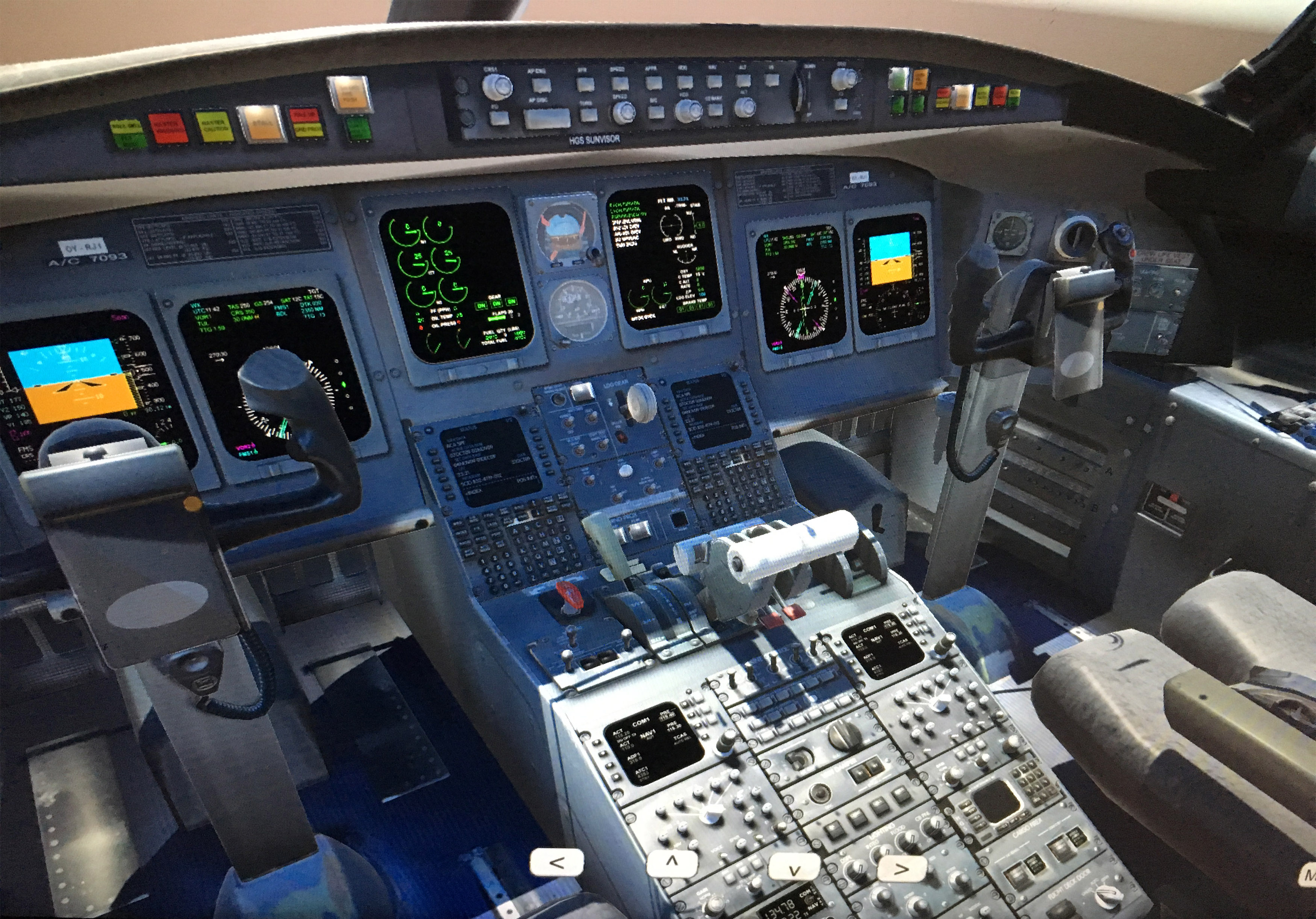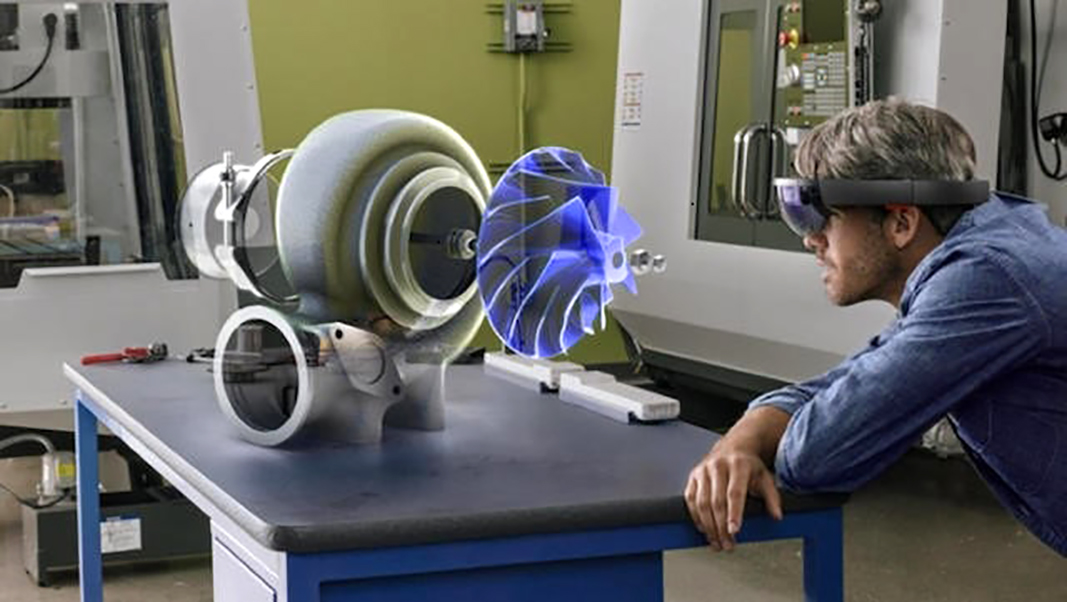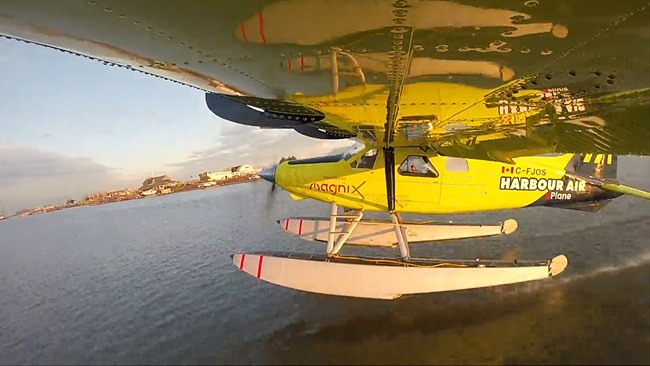Aviation professor bridges real, artificial worlds
JetXplore holographic learning enhances training
Western Michigan College of Aviation associate professor Lori Brown harnessed the advantages of augmented reality technology to make learning come alive for aviation students. She designed a virtual but realistic holographic learning system called JetXplore through a partner spotlight program with Microsoft so students could see, touch, and feel the aircraft systems they studied in class.
The computer giant’s mixed reality-based HoloLens technology allows Brown’s students to become engaged in the learning process with realistic depictions of flight controls, systems, and procedures.
The technology is certainly appealing. Several years ago I returned to college to complete my undergraduate degree and would have welcomed this type of learning over the more common book, study guide, and lecture-reinforcement teaching process. Hands-on, reality-based technology is far more engaging for students because it adds a level of understanding sorely lacking in traditional classroom settings.
She was inspired by a Walt Disney quote that reads, “If you mix the old with the new, you get new all over again.” Brown lives by the mantra to create a fun and more realistic aviation learning atmosphere.
The new equipment is a far cry from the old days when she slapped a poster of an aircraft cockpit on the wall and strapped herself into a rigid chair, closed her eyes, and tried to visualize the layout of gauges and flight controls. “I wanted that poster to come alive for my students,” Brown said. “I wanted them to be able to press those buttons and have something happen.”
The 3-D HoloLens technology is as lifelike as things can get without students trudging through the slush to perform an exterior preflight or flipping switches from a sheepskin-covered captain’s chair.

Brown has seen a lot of change since she began teaching at Western Michigan College of Aviation 17 years ago, and students learn differently now than they did back then. “We were actually [recently] using transparencies and PowerPoints and as a professor I was very frustrated.” Those types of tools “just don’t really engage today’s learner. What I planned in class 17 years ago doesn’t work.”
"When I tell the students ‘No PowerPoint today, instead we’re going to use the HoloLens,' they are really excited."
The digital revolution allowed her to bridge the gap between a classroom and a flight simulator. “I tried virtual reality, and I liked it, but I didn’t like it isolating the students from the instructors and in aviation we work as a group,” she noted.
That led to trial and error during development of the PC-based program that morphed into JetXplore. “Students can interact with crews and instructors, not wires. We can’t replace the simulator but we certainly can enhance it and better prepare the students.”
She explained that students experience near-lifelike views and sensations while manipulating dials and other controls, and they are more apt to remember exact procedures like engine startup, flight management data entry, and other tasks if they feel like they are doing the real thing. “Unlike other advanced technologies, HoloLens offers a natural means of interaction. There's no mouse, wire or touch screen,” she noted. “All you need are simple gestures to interact with holograms, your voice to communicate with apps, and your eyes to navigate and analyze content.”

Students work in small groups, with some donning special headsets that display the realistic scene while their classmates control the computer-generated system. They switch roles so everyone gets a chance to experience the virtual world and “pinch, turn, and move dials and controls.” She noted that augmented reality technology helps with muscle memory and is especially helpful while learning emergency procedures.
Each unit costs about $3,000 (although Microsoft has plans to reduce the price for commercial market applications), so lab classes of 18 students are divided into workgroups of four students each. “The great thing is, while they are wearing the HoloLens, we can mirror it so the whole class can see what the student is experiencing. It offers a really rich debriefing opportunity because I can instruct as they are participating in the holographic training. It’s filmed and we can debrief as a class” when the lab ends. She noted that education comes from failures as well as success, and the debriefing is another avenue of learning.

The aircraft systems instructor noted the medical community used HoloLens technology to peer inside a human body and adapted it to explore the inside of a turbofan engine. She wanted students to see inside and interact with aircraft components and compared the learning process to “seeing the bones inside a human body."
Brown feels that HoloLens augmented reality is providing an advantage to her students by teaching familiarity before they enter professional aviation careers.
“With the JetExplore app I created, you can picture yourself inside the jet cockpit. You are interacting with a holograph and can actually start the engines,” and perform other tasks to increase understanding in real-world aviation scenarios. “It’s a new way of training. I’ve seen retention improvement and that’s the main piece” of the learning puzzle.
If she could look into a crystal ball, Brown said future adaptations might include instructing classes “in three or four places at the same time” through telepresence or teleporting. She is currently developing the HangAR, a mobile augmented reality learning space and virtual airport.
“If I can be elsewhere, it can be game-changing, especially since we’re a global industry. Mixed reality is the future, and this is just the beginning.”




